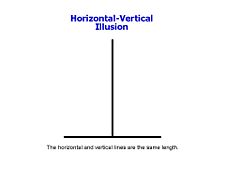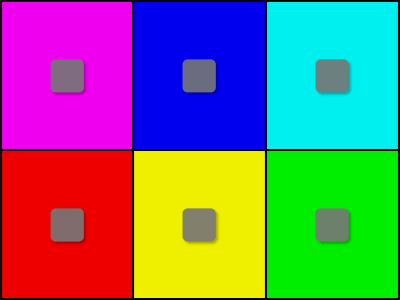Visual Illusions- A visual perception that represents what is perceived in a way different from the way it is in reality.
Horizontal- Vertical Illusion: the tendency for observers to overestimate the length of a vertical line relative to a horizontal line of the same length.
Ex.- The two lines below are the same length, even though the vertical one seems longer.
http://static.newworldencyclopedia.org/thumb/7/7d/Horizontal-Vertical.jpg/225px-Horizontal-Vertical.jpg
Depth, Reversibility, and Figure Completion: When you look at the top figure, your visual system will organize the elements into a box. The box will reverse, as in the Necker Cube illusion. The elements in the bottom figure have terminations and do not readily group into a box figure that shows reversals.
http://dragon.uml.edu/psych/box_1.gif
Blind Spot: There is a certain spot on the optic nerve that does not have any receptor cells (the area where the optic nerve leaves the eye), and, as a result, can't receive information.
https://onionesquereality.files.wordpress.com/2009/07/illustration-blind-spot.gif
Ex.- If you have a paper like the one below, you focus on the cross and move the paper away from you you will eventually reach a point where you can no longer see the dot.
http://img13.deviantart.net/487b/i/2015/089/8/c/can_you_find_your_blind_spot__by_eepawstep20-d8npsvs.jpg


















